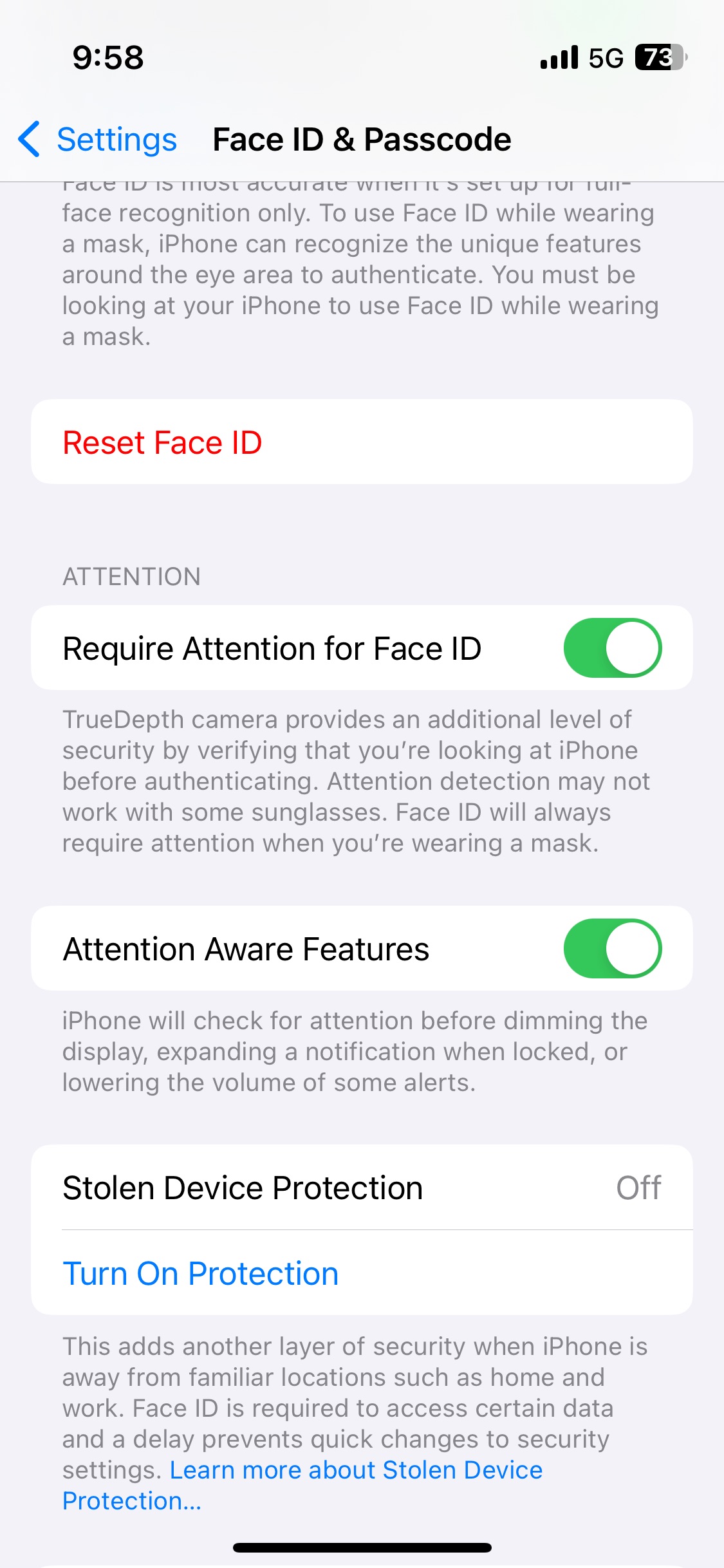Stolen Device Protection is a new capability first appearing in iOS 17.3 that provides an additional layer of protection in the event your iPhone is stolen and the thief forces you to unlock your phone or tell them your passcode. When enabled, sensitive operations such as changing the device passcode, accessing your stored passwords or credit cards, and changes to your Apple ID require additional biometric auth (Face ID or Touch ID) to better protect your data.
In addition, a one-hour delay followed by an additional biometric auth challenge is added to certain sensitive device changes such as changing the device passcode, your Apple ID password, or disabling Stolen Device Protection when your device is in an unfamiliar location. This means you can easily change your device passcode instantly while at home or work, but when you are out in public there will be a delay as that is most likely where your device may be stolen.
The goal of the time delay and additional bio auth challenge is to give you time to set the device in lost/stolen mode (via another device) before the thief can gain access to your Apple ID account and disable the "Find My iPhone" protection. Before Stolen Device Protection, if the thief has your device passcode, they can access all of the sensitive data on your iPhone immediately and even attempt to take over your Apple ID rendering the "Fine My iPhone" iCloud lock protection useless.
How to Turn Stolen Device Protection On or Off
- Go to settings, and tap on
Face ID & Passcode. - Enter your passcode.
- Scroll down to
Stolen Device Protection(about in the middle of the screen) and tapTurn On Protection. Toggle this setting to turn Stolen Device Protection Off.
